Abstract
By means of the desmosterol suppression technique described in the previous paper, the influence of hepatomas on sterol metabolism has been studied in the intact rat. The major finding of this study is that all hepatoma-bearing rats demonstrate a consistent in vivo loss of the cholesterol feedback system that is characteristic of normal liver. The results also demonstrate that such tumors retain only minor amounts of the sterol they synthesize, releasing over 90% of such endogenous sterol into the circulation. Finally, the in vivo loss of cholesterol feedback control was found to occur in at least two minimal deviation hepatomas and in one highly malignant adenocarcinoma of hepatic origin. These findings indicate that even tumors that are capable of only very limited cholesterol synthesis in vitro, can contribute significant quantities of sterol to the bloodstream.
It is concluded that as a result of their lack of normal cholesterol feedback control, hepatomas may represent a physiologically important source of sterols in the tumor-bearing animal, and that the absence of feedback control of sterol synthesis may provide a means of detecting the presence of such tumors in the intact animal.
Full text
PDF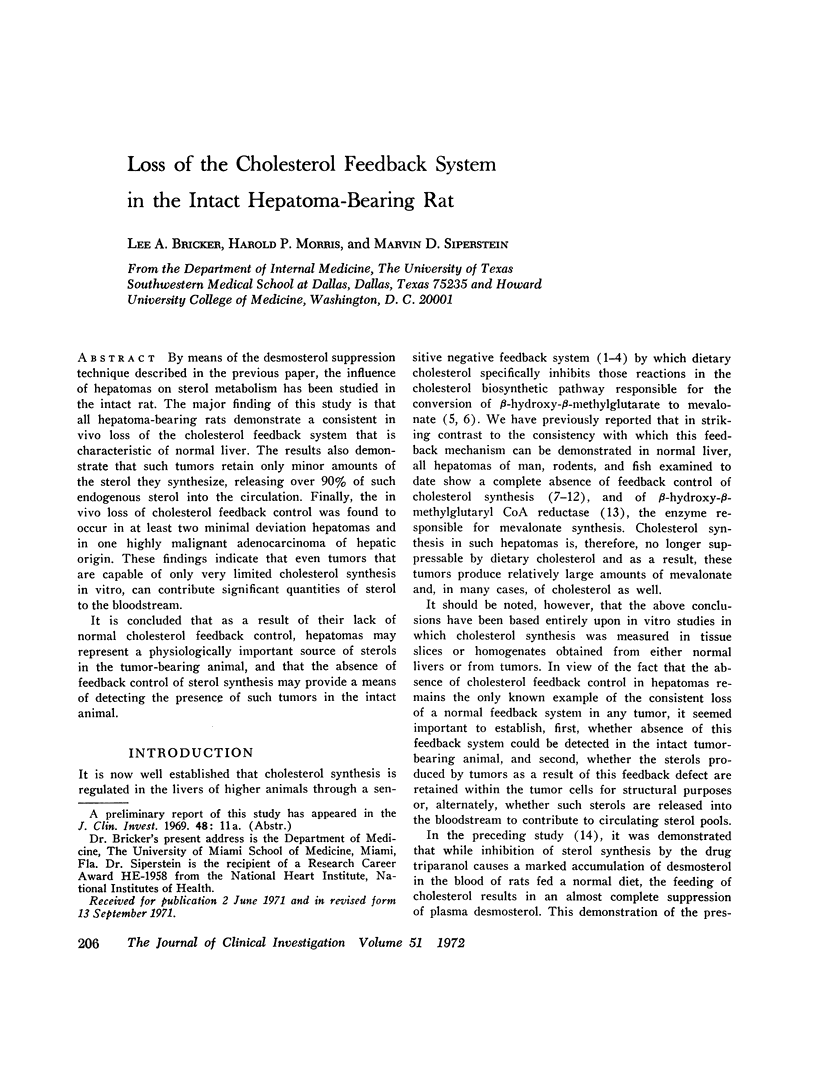
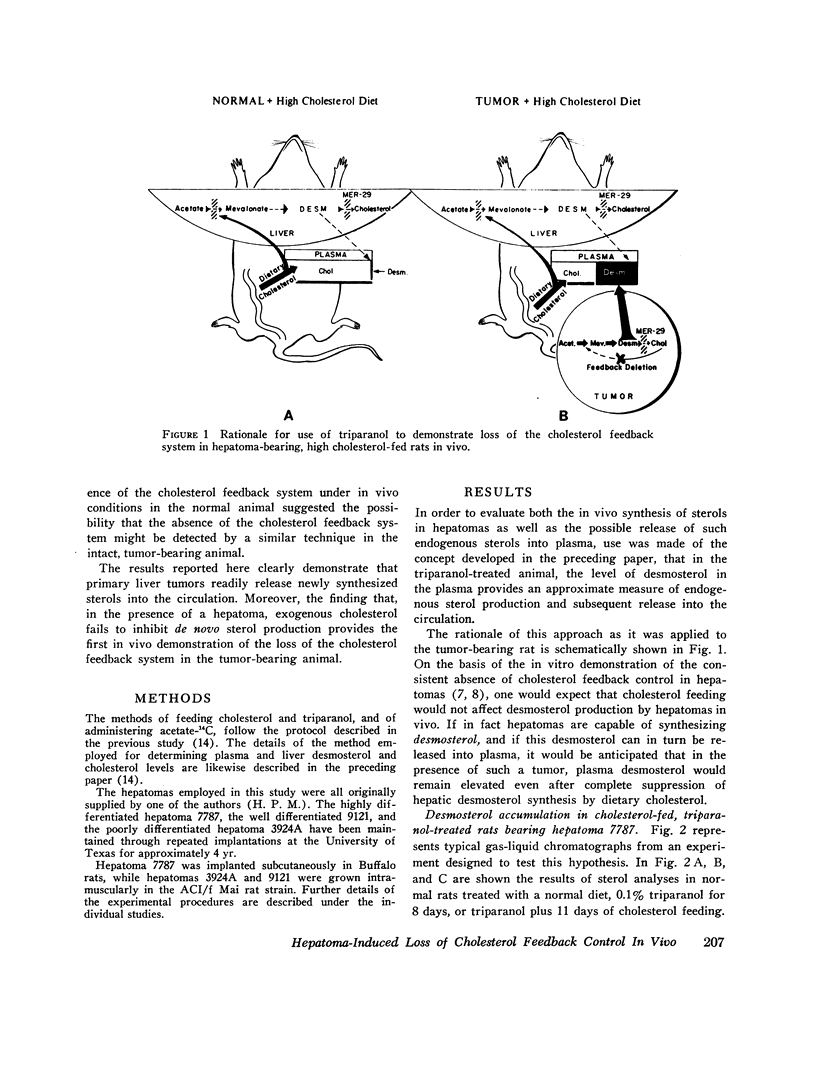
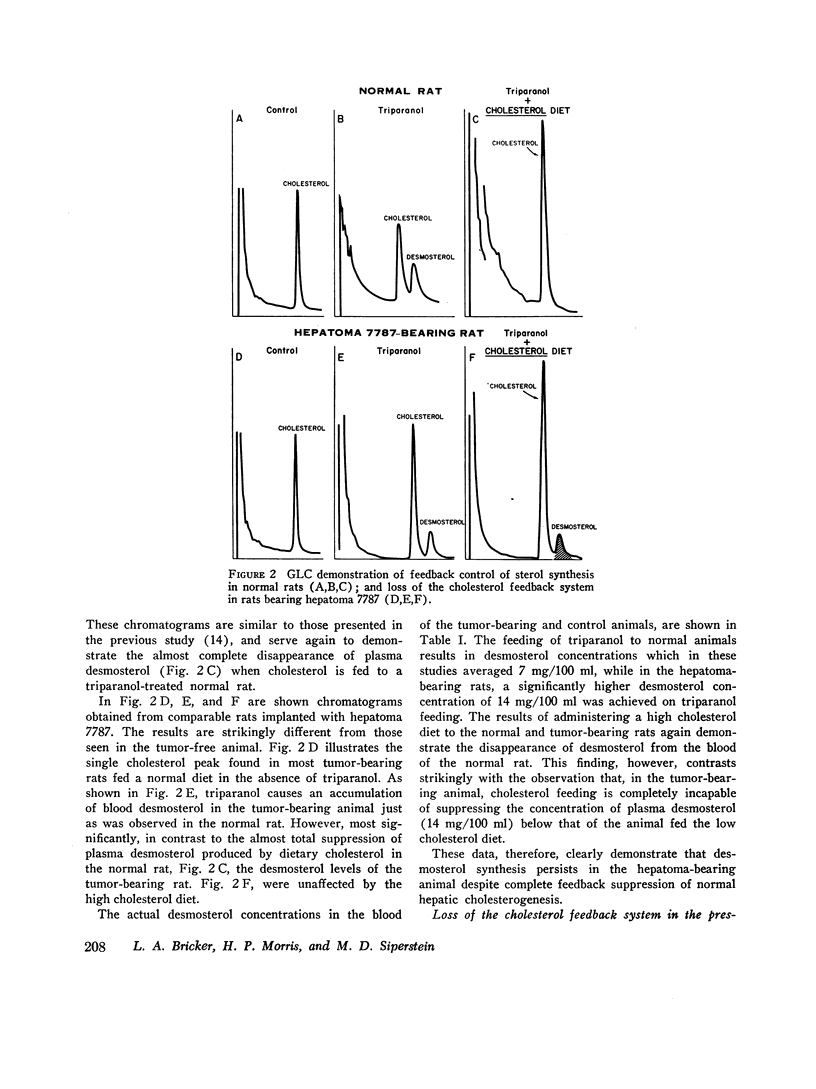
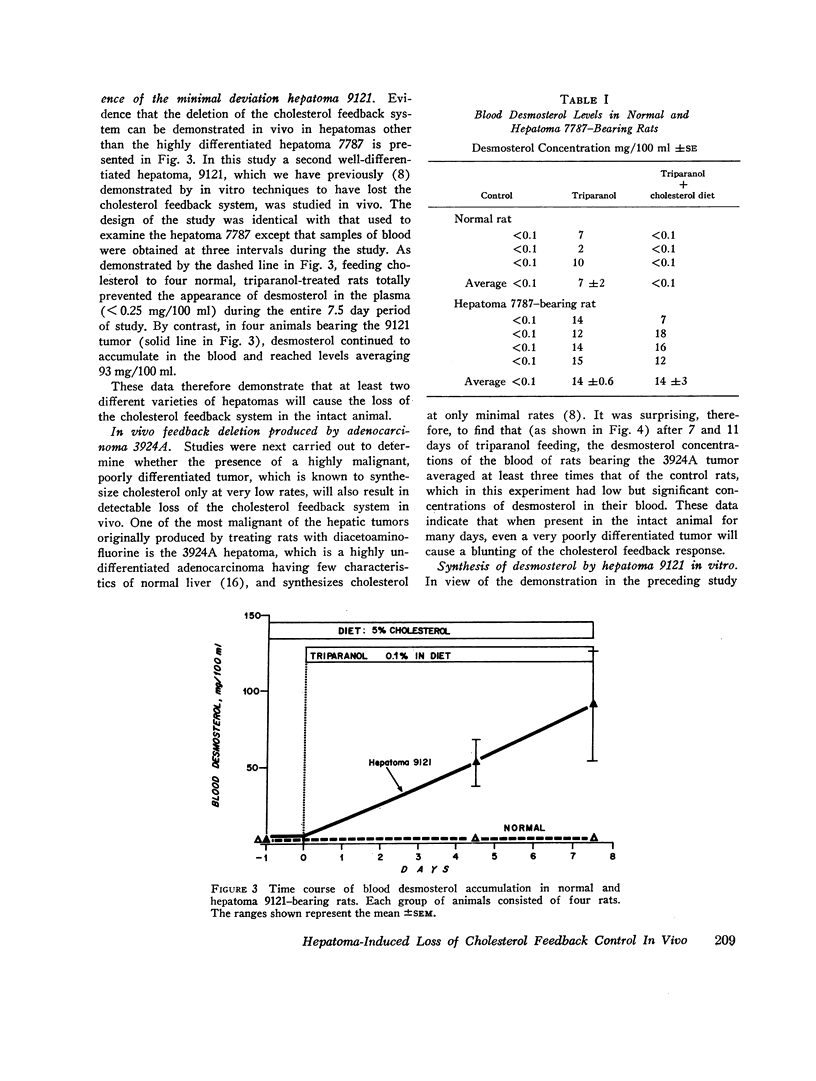
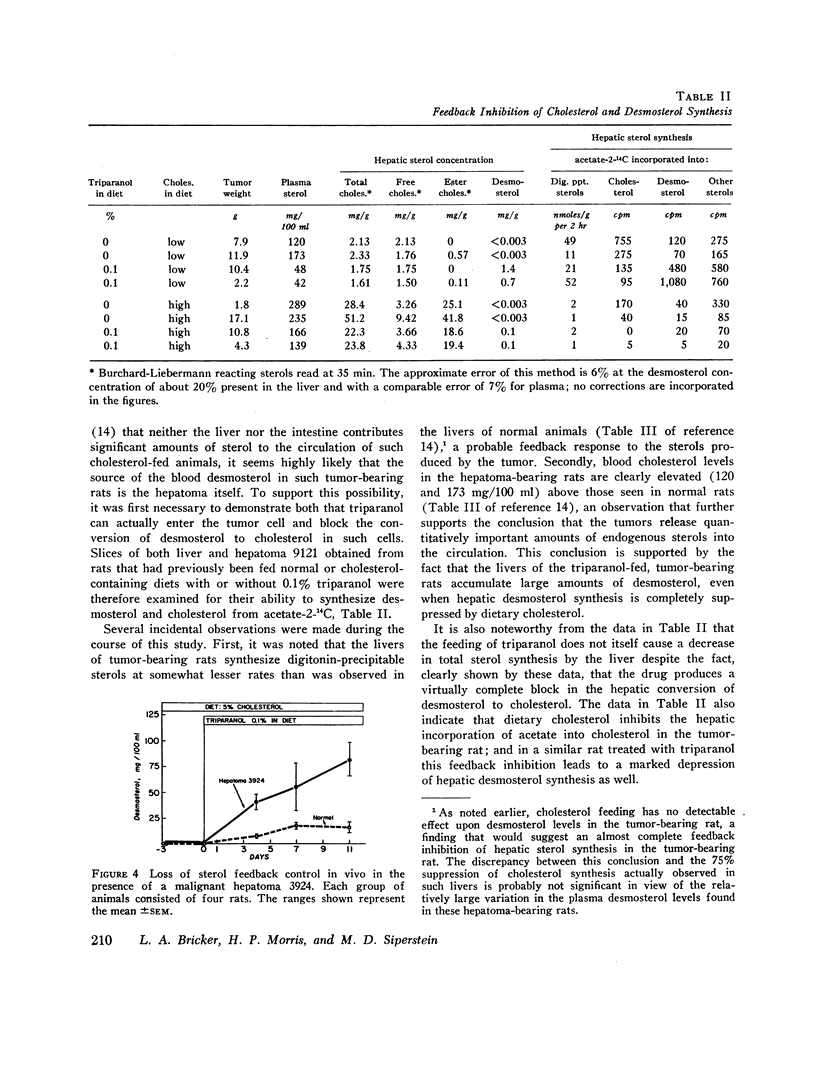

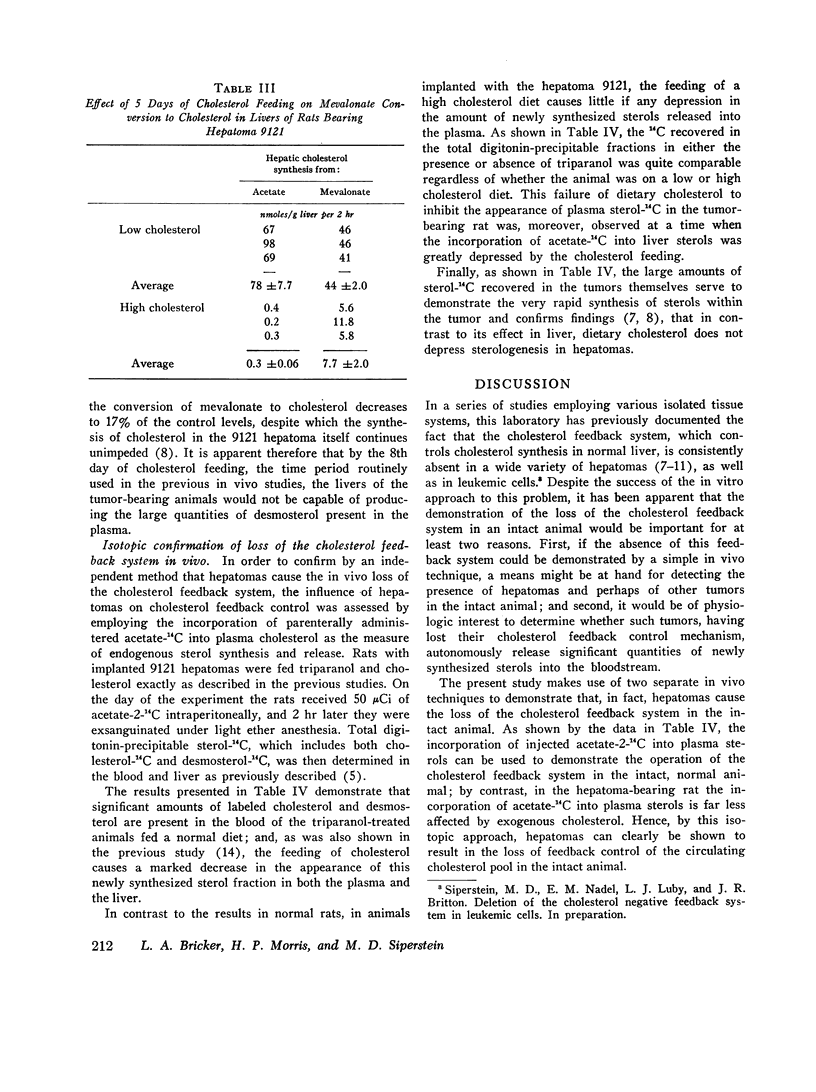
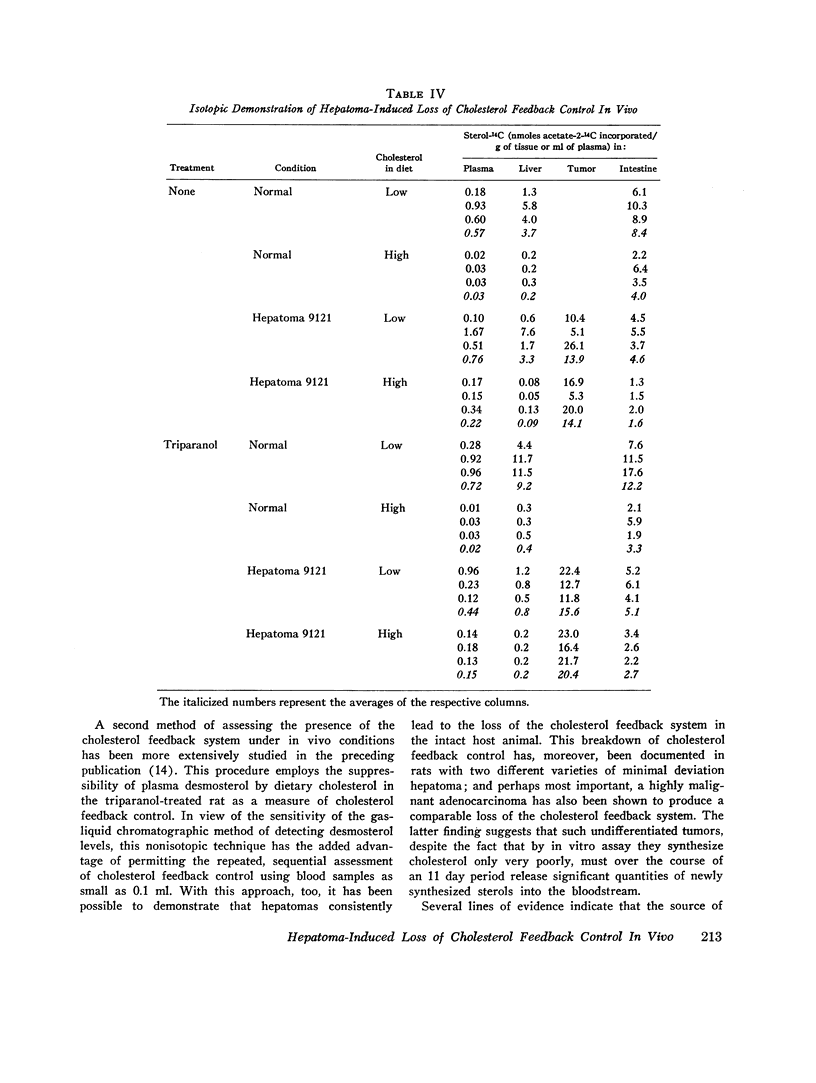
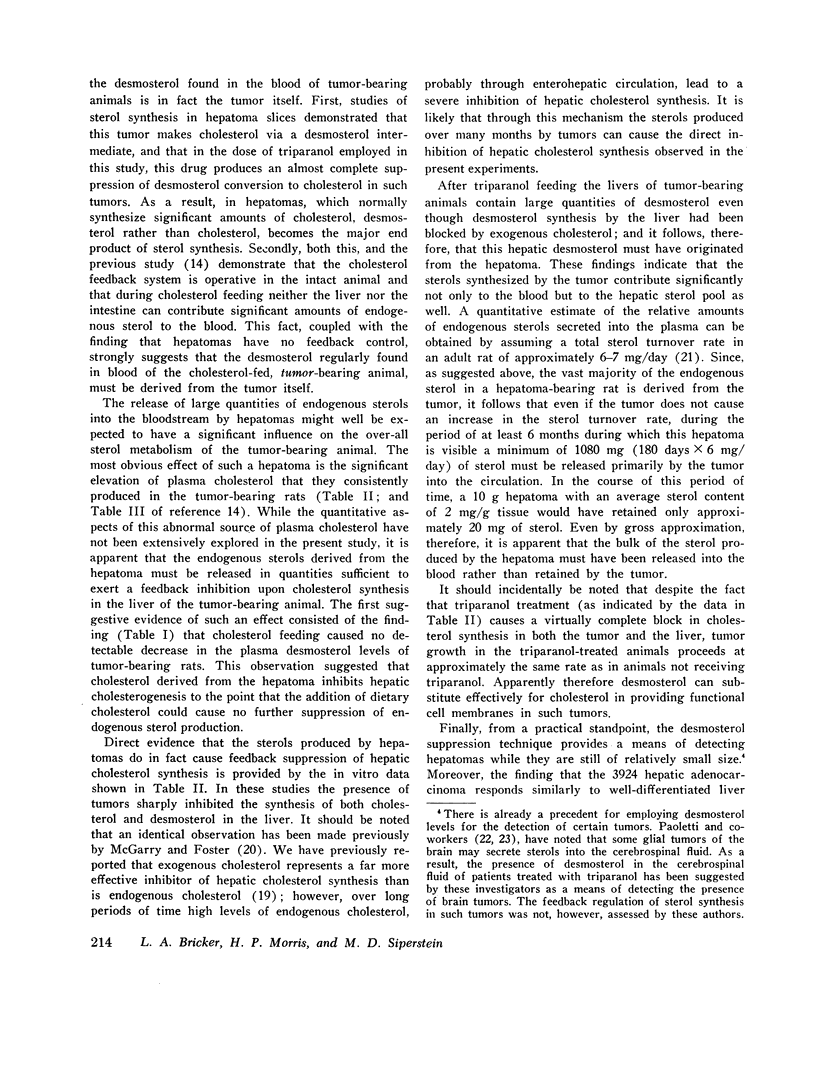
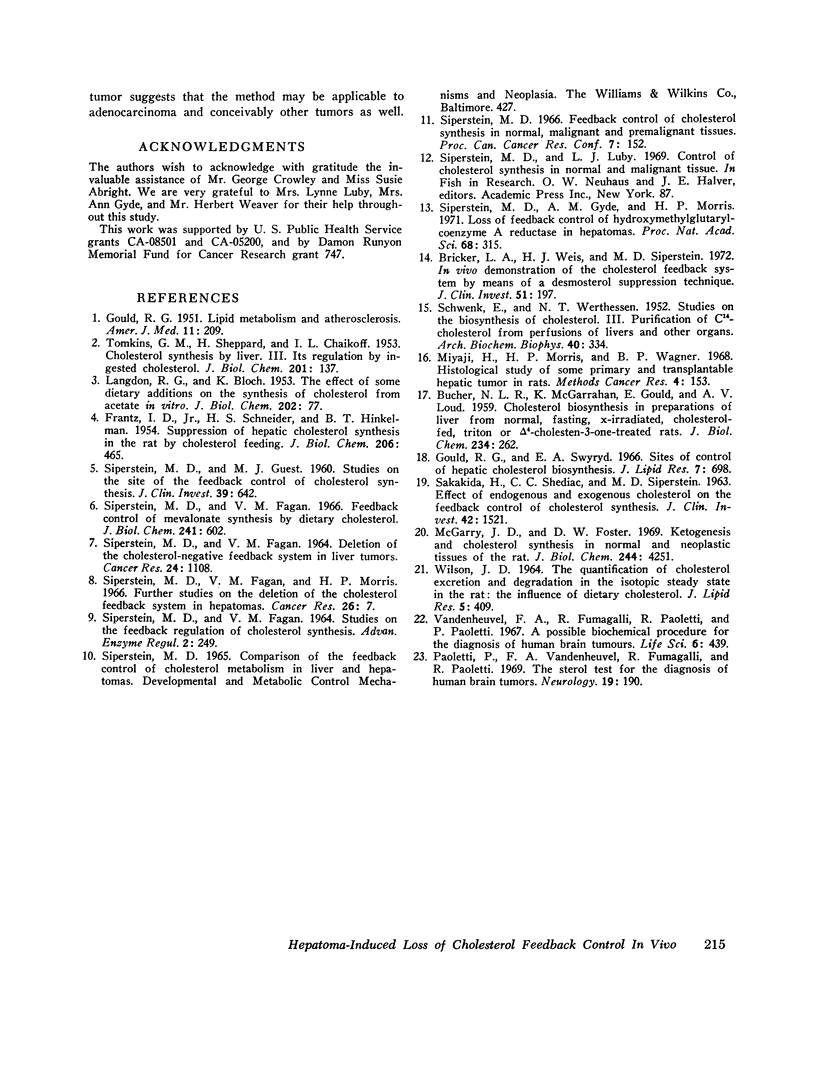
Selected References
These references are in PubMed. This may not be the complete list of references from this article.
- BUCHER N. L., McGARRAHAN K., GOULD E., LOUD A. V. Cholesterol biosynthesis in preparations of liver from normal, fasting, x-irradiated, cholesterol-fed, triton, or delta 4-cholesten-3-one-treated rats. J Biol Chem. 1959 Feb;234(2):262–267. [PubMed] [Google Scholar]
- Bricker L. A., Weis H. J., Siperstein M. D. In vivo demonstration of the cholesterol feedback system by means of a desmosterol suppression technique. J Clin Invest. 1972 Feb;51(2):197–205. doi: 10.1172/JCI106804. [DOI] [PMC free article] [PubMed] [Google Scholar]
- FRANTZ I. D., Jr, SCHNEIDER H. S., HINKELMAN B. T. Suppression of hepatic cholesterol synthesis in the rat by cholesterol feeding. J Biol Chem. 1954 Jan;206(1):465–469. [PubMed] [Google Scholar]
- GOULD R. G. Lipid metabolism and atherosclerosis. Am J Med. 1951 Aug;11(2):209–227. doi: 10.1016/0002-9343(51)90107-6. [DOI] [PubMed] [Google Scholar]
- Gould R. G., Swyryd E. A. Sites of control of hepatic cholesterol biosynthesis. J Lipid Res. 1966 Sep;7(5):698–707. [PubMed] [Google Scholar]
- LANGDON R. G., BLOCH K. The effect of some dietary additions on the synthesis of cholesterol from acetate in vitro. J Biol Chem. 1953 May;202(1):77–81. [PubMed] [Google Scholar]
- McGarry J. D., Foster D. W. Ketogenesis and cholesterol synthesis in normal and neoplastic tissues of the rat. J Biol Chem. 1969 Aug 10;244(15):4251–4256. [PubMed] [Google Scholar]
- Paoletti P., Vandenheuvel F. A., Fumagalli R., Paoletti R. The sterol test for the diagnosis of human brain tumors. Neurology. 1969 Feb;19(2):190–197. doi: 10.1212/wnl.19.2.190. [DOI] [PubMed] [Google Scholar]
- SAKAKIDA H., SHEDIAC C. C., SIPERSTEIN M. D. EFFECT OF ENDOGENOUS AND EXOGENOUS CHOLESTEROL ON THE FEEDBACK CONTROL OF CHOLESTEROL SYNTHESIS. J Clin Invest. 1963 Sep;42:1521–1528. doi: 10.1172/JCI104836. [DOI] [PMC free article] [PubMed] [Google Scholar]
- SCHWENK E., WERTHESSEN N. T. Studies on the biosynthesis of cholesterol. III. Purification of C14-cholesterol from perfusions of livers and other organs. Arch Biochem Biophys. 1952 Oct;40(2):334–341. doi: 10.1016/0003-9861(52)90119-7. [DOI] [PubMed] [Google Scholar]
- SIPERSTEIN M. D., FAGAN V. M. DELETION OF THE CHOLESTEROL-NEGATIVE FEEDBACK SYSTEM IN LIVER TUMORS. Cancer Res. 1964 Aug;24:1108–1115. [PubMed] [Google Scholar]
- SIPERSTEIN M. D., GUEST M. J. Studies on the site of the feedback control of cholesterol synthesis. J Clin Invest. 1960 Apr;39:642–652. doi: 10.1172/JCI104079. [DOI] [PMC free article] [PubMed] [Google Scholar]
- Siperstein M. D., Fagan V. M. Feedback control of mevalonate synthesis by dietary cholesterol. J Biol Chem. 1966 Feb 10;241(3):602–609. [PubMed] [Google Scholar]
- Siperstein M. D., Fagan V. M., Morris H. P. Further studies on the deletion of the cholesterol feedback system in hepatomas. Cancer Res. 1966 Jan;26(1):7–11. [PubMed] [Google Scholar]
- Siperstein M. D., Fagan V. M. Studies on the feed-back regulation of cholesterol synthesis. Adv Enzyme Regul. 1964;2:249–264. doi: 10.1016/s0065-2571(64)80017-0. [DOI] [PubMed] [Google Scholar]
- Siperstein M. D. Feedback control of cholesterol synthesis in normal, malignant and premalignant tissues. Proc Can Cancer Conf. 1967;7:152–162. [PubMed] [Google Scholar]
- Siperstein M. D., Gyde A. M., Morris H. P. Loss of feedback control of hydroxymethylglutaryl coenzyme A reductase in hepatomas. Proc Natl Acad Sci U S A. 1971 Feb;68(2):315–317. doi: 10.1073/pnas.68.2.315. [DOI] [PMC free article] [PubMed] [Google Scholar]
- TOMKINS G. M., SHEPPARD H., CHAIKOFF I. L. Cholesterol synthesis by liver. III. Its regulation by ingested cholesterol. J Biol Chem. 1953 Mar;201(1):137–141. [PubMed] [Google Scholar]
- Vandenheuvel F. A., Fumagalli R., Paoletti R., Paoletti P. A possible biochemical procedure for the diagnosis of human brain tumours. Life Sci. 1967 Feb 15;6(4):439–444. doi: 10.1016/0024-3205(67)90014-8. [DOI] [PubMed] [Google Scholar]
- Wilson J. D. The quantification of cholesterol excretion and degradation in the isotopic steady state in the rat: the influence of dietary cholesterol. J Lipid Res. 1964 Jul;5(3):409–417. [PubMed] [Google Scholar]


